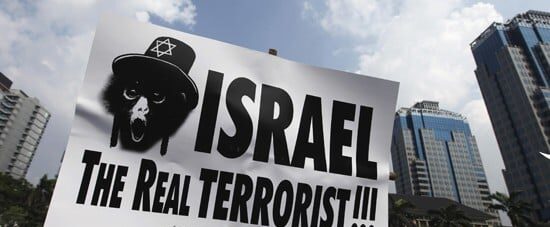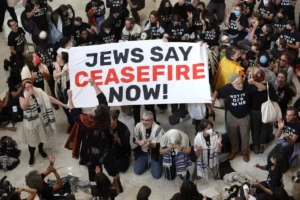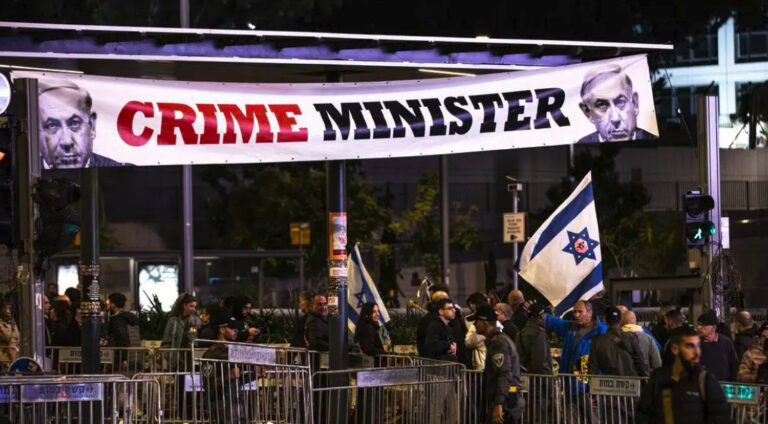
STRATEGIC ASSESSMENT. After four failed attempts to adopt a resolution on Gaza, the UN Security Council (UNSC) met again yesterday in an emergency session on the situation. The meeting was called by China and the United Arab Emirates (UAE) and featured briefings from the head of the UN agency supporting Palestine refugees (UNRWA), Philippe Lazzarini, the chief of the UN Children’s Fund (UNICEF), Catherine Russell, and a senior official from the UN Office for the Coordination of Humanitarian Affairs (OCHA), Lisa Doughten. Mr. Lazzarini highlighted the mounting death toll, noting that 70 percent of those killed in Gaza have been women and children, and that 64 of his agency’s staff have been killed since Hamas’ attack on Israel on October 7. Ms. Russell expanded on the severe impact the conflict has had on children, noting that more than 420 children are being killed or injured each day in Gaza. Ms. Doughten noted both the devastating humanitarian situation in Gaza, while also underscoring the causalities, displacement, and trauma inside Israel caused by rockets fired from Gaza into populated Israeli areas. Several UNSC members recalled the UN General Assembly’s (UNGA) resolution on the crisis that passed on Friday and reiterated that international humanitarian law needed to be respected. The UNGA motion was originally proposed by Jordan and called for an “immediate, durable and sustainable humanitarian truce” that would allow humanitarian aid to flow unrestricted into Gaza. 120 countries were in favor, 14 voted against – notably the United States – while 45 countries abstained. Even though the motion is non-binding, it is important symbolically, and the General Assembly is expected to continue its emergency special session on the crisis later today.
During yesterday’s emergency session, several UNSC members insisted that the Council must act on the crisis, with several members blaming others for the stymied consensus and sclerotic nature of the process. The Council’s most recent attempt failed last Wednesday, as UNSC members failed to adopt two competing resolutions – one proposed by the United States and the other by the Russian Federation. Unlike UNGA resolutions, UNSC resolutions are legally binding. The competing resolutions and the failure to adopt either one reflected the deepening deadlock in the Security Council over the current crisis and the dire humanitarian situation in Gaza. Moreover, the inability of the UNSC to reach a consensus on the current crisis has reinforced questions about whether international institutions, particularly the Council, are positioned to realistically mitigate threats to international peace and security and facilitate resolution when crises erupt or whether they are ineffective and marginalized as relics of a bygone geopolitical era, as some have suggested.

Despite the seemingly intractable tensions in the UNSC over the conflict, the United States and regional allies have been discussing efforts to prevent the spread of the conflict, secure the release of hostages, and mobilize humanitarian aid. U.S. Secretary of State Antony Blinken spoke with the Qatari Prime Minister and Minister of Foreign Affairs Mohammed bin Abdulrahman Al Thani yesterday, reiterating the role of the Qatari government in securing the exit of U.S. citizens from Gaza, including the release of two U.S. citizens held hostage by Hamas. Amidst mounting calls for a ceasefire, including in the UN General Assembly, some relatives of hostages have reportedly called for accepting Hamas’ offer to swap foreign nationals being held by the group for about 5,000 Palestinians, including militants held in Israeli prisons. Israeli Prime Minister Benjamin Netanyahu has ruled out a ceasefire, and the government has rejected the offer to swap hostages for those being held in prisons, believing instead that the Israeli army’s advance through northern Gaza opens an opportunity to free hostages. The rescue of an Israeli army private on Sunday night seemed to bolster the Israeli government’s belief that it could simultaneously wage war and free hostages, yet over 230 hostages are still held by Hamas.

Amidst these international political tensions, the humanitarian situation in Gaza has continued to deteriorate while the death toll mounts daily. UN and medical staff have warned that Israeli airstrikes have hit closer to hospitals, a pressing concern as tens of thousands of Palestinians continue to shelter in hospitals alongside the thousands of wounded. Over eight thousand people have reportedly been killed in the Strip, according to the Gaza Health Ministry, with 3,195 of those being children – 40 percent of the total deaths. The number of children killed in Gaza has surpassed the annual number of children killed across the world’s conflict zones since 2019, according to Save the Children. With one thousand children still reportedly missing in Gaza, assumed to be buried under the rubble of collapsed buildings, the total death toll is believed to be much higher than official estimates.

Nearly three dozen trucks of humanitarian aid entered Gaza via the Rafah crossing on Sunday, the largest aid convoy since October 7. Despite this aid, humanitarian workers have stated that it falls critically short of what is needed, as supplies of water, food, medicine, and fuel continue to run dangerously low in the territory. With fuel reserves nearing depletion and Israel refusing to allow renewed deliveries because it believes Hamas could use the fuel for military purposes, UN aid agencies have been forced to scale back their operations drastically. The lack of fuel has hampered water supplies, which rely on fuel for desalination and water pump stations. Underscoring the critical nature of the humanitarian situation and the small but insufficient resupply of aid, thousands of Gazans broke into UN warehouses on Sunday, taking flour and other essential items. Thomas White, the Director of the UN Relief and Works Agency for Palestine Refugees in the Near East (UNRWA) Affairs in the Gaza Strip, stated that the incident displayed “a worrying sign that civil order is starting to break down.… People are scared, frustrated, and desperate.” The thousands ordered to evacuate from the northern territory have placed further pressure on communities, public services, and supplies in the south, and the processes, strict inspections, and the small number of aid trucks involved with the humanitarian convoys mean that resupply is dangerously slow and unable to meet the current need. The lack of a regular and steady flow of humanitarian supplies, exemplified by the failure of the UN Security Council resolutions and parties to the conflict to create such a pipeline, means that tensions – including mounting grievances – will likely continue to grow in both the Gaza Strip and the region.





